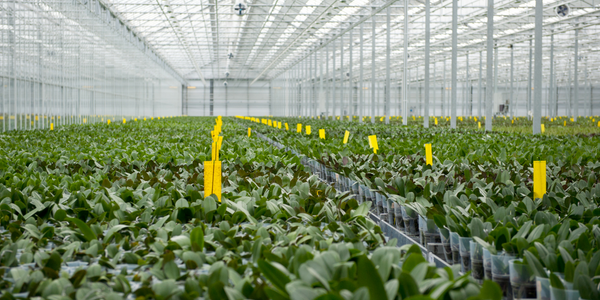Download PDF
Upgrading from Excel Saves Time, Eliminates Errors & Streamlines Budgeting Across 4 Entities
Technology Category
- Platform as a Service (PaaS) - Data Management Platforms
Applicable Industries
- Agriculture
- Food & Beverage
Services
- Cloud Planning, Design & Implementation Services
The Challenge
Price Family Vineyards & Estates, a family of vineyards and wineries in Sonoma County, California, was facing challenges in consolidating the financial statements of each of its entities and preparing individual budgets for each LLC. The business was growing and the existing system, which relied heavily on Excel, was proving to be time-consuming and prone to errors. Additionally, the company was looking for a new accounting software to replace the winery-specific system it had been using, one that its sales teams would find more intuitive and user-friendly. After considering several options, they decided to switch to QuickBooks Premier due to its ability to integrate with multiple third-party software platforms that the sales teams were actively using.
About The Customer
Price Family Vineyards & Estates is a family of vineyards and wineries owned by Bill and Eva Price. It includes 370 planted acres across several vineyards as well as two wineries in and around Sonoma County, California. Each vineyard and winery has its own LLC, falling under the Price Family Vineyards & Estates, with an individual budget, P&L, revenue, and expenses for each. As the business grew, the company found it increasingly challenging to consolidate the financial statements of each of the entities and prepare individual budgets for each LLC in a timely manner.
The Solution
After switching accounting systems, the company decided to find an alternative to Excel for budgeting, forecasting, and reporting needs. An online search led them to Centage, a cloud-based modern FP&A platform that offers sophisticated planning, budgeting, forecasting, and advanced reporting and analytics capabilities. After a smooth and quick implementation, the company was able to have the two vineyard budgets and two winery budgets fully operational within 4 months. The data entered into QuickBooks flows into Planning Maestro and updates all financial statements automatically, following the business logic of each entity. The pre-built business drivers and allocation methods within Planning Maestro were particularly helpful, as the company uses those same drivers to track expenses and revenue.
Operational Impact
Quantitative Benefit
Related Case Studies.

Case Study
Intelligent Farming with ThingWorx Analytics
Z Farms was facing three challenges: costly irrigation systems with water as a limited resource, narrow optimal ranges of soil moisture for growth with difficult maintenance and farm operators could not simply turn on irrigation systems like a faucet.

Case Study
The Kellogg Company
Kellogg keeps a close eye on its trade spend, analyzing large volumes of data and running complex simulations to predict which promotional activities will be the most effective. Kellogg needed to decrease the trade spend but its traditional relational database on premises could not keep up with the pace of demand.

Case Study
HEINEKEN Uses the Cloud to Reach 10.5 Million Consumers
For 2012 campaign, the Bond promotion, it planned to launch the campaign at the same time everywhere on the planet. That created unprecedented challenges for HEINEKEN—nowhere more so than in its technology operation. The primary digital content for the campaign was a 100-megabyte movie that had to play flawlessly for millions of viewers worldwide. After all, Bond never fails. No one was going to tolerate a technology failure that might bruise his brand.Previously, HEINEKEN had supported digital media at its outsourced datacenter. But that datacenter lacked the computing resources HEINEKEN needed, and building them—especially to support peak traffic that would total millions of simultaneous hits—would have been both time-consuming and expensive. Nor would it have provided the geographic reach that HEINEKEN needed to minimize latency worldwide.

Case Study
Greenhouse Intelligent Monitoring and Control Solution
Farming Orchids is the most successful form of precision farming in Taiwan, and also the most exported flower. Orchids need a specific temperature and humidity conditions to grow and bloom, and its flowering time may not be in line with market demands, so the price collapses when there is overproduction. Therefore, some farmers began to import automated greenhouse control systems for breeding and forcing, which not only improves quality, but also effectively controls the production period and yield to ensure revenue. In 2012, an orchid farmer built a Forcing Greenhouse of about 200 pings (approximately 661 Square Meters) in Tainan, Taiwan. The system integrator adopted Advantech’s APAX-5000 series programmable automation controllers to build the control platform, coupled with Advantech WebAccess HMI/SCADA software, to achieve cloud monitoring. The staff of the orchid field can monitor important data anytime via smart phone, iPad, and other handheld devices, and control the growth and flowering conditions. System requirements: In the past, most environmental control systems of orchid greenhouses in Taiwan used PLCs (Programmable Logic Controller) with poorscalability and control, and could not be connected to the Internet formonitoring from the cloud. For advanced database analysis and networking capability, the PC platform must be adopted. Therefore, PAC Systems (Programmable Automation Controller) with both PLC programming capabilities andPC functions is a better choice.The environmental control of the Orchid greenhouse switches on and off devices like fan, shade net, cooling/heat pump, liquid flow control, water-cooling wall etc. It is controlled by a control panel of electric controllers, and is driven by a motor, to adjust the greenhouse temperature, humidity, and other environmental conditions to the set parameters.







